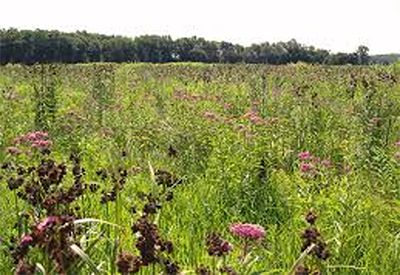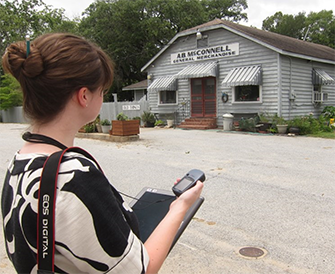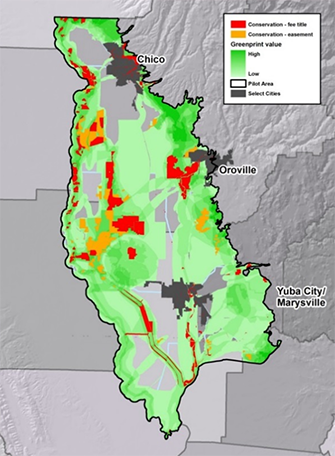
Featured Streamlining Practices Are Still Yielding Benefits:
Five, Ten, and Fifteen Years Later
For the past 15 years, the Federal Highway Administration’s (FHWA) Office of Project Delivery and Environmental Review has highlighted environmental streamlining practices from around the country in this monthly newsletter. With the publication of this issue, 181 newsletters have documented the successes of Federal, State, Tribal, and local partners in protecting water quality, wetlands, wildlife, historical sites, cultural areas, and parks while accelerating the completion of transportation projects nationwide. Each article covered a process, agreement, resource, or partnership that was improved or innovative at the time. Every topic highlighted in the newsletter was selected in part because it provided a path toward long-lasting positive effects on environmental review processes in transportation decisionmaking.
This special anniversary issue revisits one newsletter from the inaugural year (2001), the 5th anniversary year (2006), and the 10th anniversary year (2011). In 2001, a newsletter article featured the Michigan Department of Transportation’s (MDOT) successful work with the Michigan Department of Environmental Quality (MDEQ) on streamlining Section 404 permitting across the State. A 2006 article focused on the South Carolina Department of Transportation’s (SCDOT) partnership with the South Carolina State Historic Preservation Office (SHPO) to preserve a historic battlefield site during the Broad River Bridge mitigation project. Lastly, the California Department of Transportation (Caltrans) and the California Department of Water Resources (DWR) were featured in a 2011 article for their efforts to advance mitigation planning at a regional scale in California. Each issue featured a different State and topic, but the long-term results have been the same: all three State DOTs have established and strengthened relationships within their agencies and with outside partners, which has ultimately led to more collaborative and efficient organizational cultures in addition to faster project delivery and improved environmental outcomes.
Fifteen Years Later: MDOT Maintains Efficient Permitting Process with Partners

Preserved wetland in Michigan. (Courtesy of MDOT)
Over thirty years have passed since MDOT first signed a Memorandum of Understanding (MOU) with MDEQ in 1985 to prioritize, support, and expedite wetlands permitting on transportation projects across the State. Fifteen years ago, the newsletter highlighted the importance of MDOT’s relationships with MDEQ, as well as the FHWA Michigan Division Office, the County Road Association (CRA) of Michigan, and the Michigan Municipal League (MML). Together, these agencies implemented a customized Section 404 permitting program that meets the specific needs of Michigan projects through approaches that may not be available under a strictly Federal permitting process. Michigan and New Jersey are the only States that have wetlands permitting authority instead of the Federal government.
When the MOU was established, MDOT funded 11 full time MDEQ-managed positions dedicated to providing transportation wetlands permitting actions at the State and local level. Having permitting staff at MDEQ who were dedicated to evaluating transportation projects and mitigating their impacts allowed MDOT designers to consult MDEQ staff on every project before and during permitting. Today, MDOT still funds 10 of these full-time positions, and the average permit takes 54 days to process. That is six days faster than the required timeline in the MOU. MDOT’s success with funding MDEQ positions has led the agency to explore funding positions with other partners. MDOT now also funds a full-time position at the U.S. Fish and Wildlife Service.
In 1994 the original MOU was expanded to reflect the results of a 1992 pilot project that expanded the MOU coverage statewide, improved financial accountability, and responded to changes in environmental regulations. Since then, MDOT, MDEQ, CRA, MML, and representatives from various cities in Michigan review and sometimes update the MOU annually. They also meet quarterly to discuss issues and report on activities from the previous quarter. The 1994 MOU also includes a formal conflict resolution process for resolving issues among the signatory agencies, but the partners have never had to use it. Close and frequent communication has allowed the partners to always resolve their differences, and a permit has never been denied in the 31 years since the original MOU was signed.
Ten Years Later: South Carolina DOT Strengthens Historic Preservation Programming
In June 2005, SCDOT was faced with a dilemma. The Broad River Bridge along South Carolina Highway 72—the only river crossing along the highway for 30 miles—was deemed functionally deficient, and a new bridge needed to be constructed nearby. In the process of selecting a new site, archeological investigations conducted as part of the environmental documentation process uncovered the Fish Dam Ford Battlefield, the site of an important American victory over the British in the Revolutionary War. The proposed bridge would destroy the historic site and excavating the entire site would be costly and time consuming.

SHPO staff member, Kristie Persons, documents a historic country store in South Carolina in 2012. (Courtesy of SC SHPO)
Working with the South Carolina SHPO and the South Carolina FHWA Division Office, SCDOT decided to purchase 143 acres instead of the originally proposed 30 acres, so the entire site would be permanently protected and enough space would be available to construct the new bridge. The South Carolina Department of Natural Resources (DNR) agreed to manage the land through its Heritage Preservation Program and the U.S. Forest Service agreed to monitor activity on the site. Throughout the process, six agencies worked together to address a project at the intersection of historic preservation and transportation.
SCDOT has been expanding the relationships it established with partners during the Broad River Bridge mitigation project since it was featured in the newsletter in 2006. Using its partnerships, SCDOT now conducts more innovative mitigation than is required, for example, by the National Historic Preservation Act. In the past, SCDOT would document historic resources that were being converted to new uses or taken down by taking pictures and filing a report.
With SHPO’s help, SCDOT is producing maps, brochures, and kiosks as part of historic driving tours that memorialize and promote public access to past historic landmarks. Building on its successes working with SHPO and DNR, SCDOT conducted outreach to new partners, which now include the South Carolina Department of Parks, Recreation, and Tourism and the National Parks Service. Thanks to groundwork laid during the Broad River Bridge mitigation project, SCDOT and its partners are providing more public access to historic transportation stories and sites. For example, in 2013 SHPO and SCDOT published Rural Commerce in Context: South Carolina’s Country Stores: 1850-1950- content is no longer available, a survey of country stores in selected counties and background on the origins and functions of country stores. SHPO also maintains a Facebook page dedicated to sharing information about historic country stores.
Five Years Later: Caltrans and Partners “RAMP” Up Advance Mitigation Projects
Successful regional mitigation planning requires early and frequent coordination among regulatory and transportation agencies. Doing so is a challenge for many transportation agencies because transportation needs are often addressed on a project-by-project basis. This means any mitigation that is planned for a project is often piecemeal from a regional perspective and misses opportunities to create habitat connections and expand existing conservation areas.

Map of existing conservation land locations and other conservation priorities, which creates a “greenprint,” or plan for conservation of species or habitat in the Sacramento Valley pilot area. (Courtesy of UC Davis)
In 2008, Caltrans and the California DWR established the Regional Advance Mitigation Planning (RAMP) Workgroup to develop a more comprehensive approach to mitigating unavoidable biological resource impacts caused by State infrastructure projects. RAMP was established to bring together State and Federal agencies to identify strategies or anticipated mitigation needs and to create a framework to improve mitigation planning. Caltrans, DWR, and their partners developed the RAMP Statewide Framework and initiated a pilot project on a 1,500-square-mile area in central Sacramento Valley to test the framework. The framework does the following: (1) describes a process for identifying and establishing regional assessment areas; (2) identifies the steps for implementing RAMP at the regional level; and (3) presents recommendations for creating a statewide management and funding structure for RAMP.
At the time the RAMP MOU was signed, DWR had money available through water bonds to fund joint planning, but Caltrans did not have available funds. To find and leverage funds for RAMP, Caltrans developed the Statewide Advance Mitigation Initiative (SAMI), a planning effort that has helped Caltrans secure funding for advance mitigation through the State Highway Operation and Protection Program (SHOPP). The SHOPP is a biannual capital improvements funding program that is managed by the California Transportation Commission. The SHOPP allocated $5 million annually for advance mitigation in 2013 and 2014, and in 2016 that was increased to $20 million annually. Three advance mitigation projects included in the 2016 SHOPP have been approved and have moved into programming as of June 2016. The 2018 SHOPP is in development, and it includes seven mitigation projects, one of which builds on efforts from the original RAMP pilot study in Sacramento.
RAMP and SAMI have enabled Caltrans and its partners to integrate transportation and conservation planning to benefit both transportation project delivery and conservation outcomes, which was the ultimate goal of the RAMP partnership. Caltrans is also looking at its long range transportation plan for ways to consider wildlife and environmental impacts in the long term. Beyond securing funding for and beginning implementation of advance mitigation planning and projects, Caltrans has changed its culture. The agency is now proactively coordinating inside the agency and with outside partners. Federal and State partners are considering environmental concerns much earlier in the project planning process and are identifying opportunities to coordinate and capitalize on joint efforts to benefit both project delivery and conserving California“s natural resources.
Structured Partnerships Are the Key to Long-Term Successes in Stewardship
Fifteen years and 181 issues have shown that there are many ways for transportation agencies to successfully accelerate projects while considering and improving environmental outcomes. In the cases of MDOT, SCDOT, and Caltrans, all three agencies were successful because they identified partner organizations and formed strong working relationships with them. MDOT has been working closely on Section 404 permitting with MDEQ for more than 30 years; SCDOT and SHPO have built on their relationship over the past 10 years since the Broad River Bridge mitigation project commenced in 2005; and Caltrans and DWR are approaching 10 years of partnership on advance mitigation planning. Formal collaborations, such as those established by MOUs, keep stakeholders accountable to each other and motivate them to fund and facilitate joint work. Regardless of the type of relationship, the partners involved, or the duration, the biggest takeaway for these agencies has been to open the lines of communications within and across agencies.
Contact Information
Michigan
Michael O’Malley
Compliance and Mitigation Unit
Environmental Services Section
Michigan Department of Transportation
OMalleyM@michigan.gov
(517) 335-2634
Patrick Marchman
Environment & Realty Program Manager
U.S. Federal Highway Administration
Patrick.Marchman@dot.gov
(517) 702-1820
South Carolina
J. Shane Belcher
South Carolina Division Office
Federal Highway Administration
Jeffrey.Belcher@dot.gov
(803) 253-3187
California
W. Stuart Kirkham
Office of Biological Studies
Division of Environmental Analysis
California Department of Transportation
Stuart.Kirkham@dot.ca.gov
Larry Vinzant
California Division Office
Federal Highway Administration
Larry.Vinzant@dot.gov
Look What's New!
- The Successes in Stewardship newsletter is celebrating 15 years of sharing outstanding environmental streamlining practices. In honor of this milestone, we’ve assembled some facts and figures of what has transpired since the inaugural issue in an infographic!
- The application period for FHWA’s Environmental Excellence Awards is open until September 15, 2016. As in years past, the 2017 EEAs will promote awareness of the successes that States, agencies, and individuals can achieve by incorporating environmental excellence into their everyday work.
- The 2017 Excellence in Right-of-Way Awards’ nomination period is now open. This biennial awards program recognizes outstanding transportation right-of-way practices and projects across the country in one or more of the following categories: Innovation, Leadership, Stewardship, Streamlining and Integration, and Peer of the Year. The nomination period closes on September 15, 2016. For more information, visit https://www.fhwa.dot.gov/real_estate/right-of-way/rowea/index.cfm.
- PlanWorks now includes a Bicycles and Pedestrians Application, which provides updated links to the latest references and tools to support collaboration related to planning and project development. A virtual workshop will be held on August 25, 2016 from 1:00-2:30 p.m. to introduce users to the new content.
- Stay up-to-date on the latest FAST Act guidance and memorandum from the FHWA Office of Project Delivery and Environmental Review by subscribing to our FAST Act email updates. You’ll receive a notification when any new FAST Act materials are added to the Environmental Review Toolkit.
Successes in Stewardship is a Federal Highway Administration newsletter highlighting current environmental streamlining and stewardship practices from around the country. Click here to subscribe, or call (617) 494-3719 for more information.

